Belém is not really in walking distance from central Lisbon. We had therefore decided to travel by one of the regional trains.
We set off from the Metro station Cais de Sodré (green metro line) to the stop Belém. This costs 1.30 € per person (on the rechargeable Viva Viagem card) and is an alternative to the 3.5 km walk. Our first stroll took us to the bank of the Tagus and after a short walk, we started our tour through Belém.
Padrão dos Descobrimentos
The Monument of the Discoveries stands on the banks of the Tagus River. It was built in 1960 for the 500th anniversary of Henry the Navigator. The Padrão dos Descobrimentos reminds of the age of discoveries. The people depicted on the pedestal of the monument are 33 important Portuguese personalities of the late medieval period. These include not only kings and princes, but also sailors, clergy, researchers and scientists.

A wind rose of mosaic stones was laid at the entrance. It has a diameter of 50 meters and shows a world map and the routes of the Portuguese explorers in the 15th and 16th century.

It is possible to take an elevator up to an observation deck. We decided to take a tour around the monument. Really impressive. The size of the pedestal with the figures surprised me. The figures are very detailed, the longer you stand in front of the monument and look at them, the more interesting details are revealed.
Address:
Av. Brasília,
1400-038 Lissabon, Portugal
Opening hours:
March-September: 10am-7pm
Closed in March Monday.
Closed on 1st May
October – February: 10-18h
Monday closed, 25.12. and 1.1.
Entry fees (2017):
Adults: 4, – €
Discounts are offered.

Torre de Belém
Not far from the Monument of the Discoveries stands the Torre de Belém. This was our next stop on our small walk through town.
The Tower of Belém is one of the most famous sights of Lisbon. It stands at the mouth of the Tagus, is 35 meters high and, as only very few structures have, has survived the severe earthquake of Lisbon in 1755. King Manuel I ordered the construction of the tower in 1515, but it was completed only after his death in 1521. It once served as a lighthouse and as a symbol of the Portuguese era as a sea and trading empire. There was a second tower on the other side of the Tagus, both towers were used for defence of the sea route. The twin tower was destroyed during the earthquake. Until the 19th century, weapons were stored inside the tower and it also had cells for prisoners.

Since 1983, the Torre de Belém has been listed on the UNESCO World Heritage List. We looked at the tower from the outside. The building has a really compact appearance, only some specific elements on the façade add a feeling of lightness to it. The small windows and thick walls make the initial purpose of the tower very clear – to stop enemies before they reach the city. Together with the twin tower on the other side of the river, they were surely difficult to overcome.
Buy your Belém Tower Tickets Online
Address:
Av. Brasília,
1400-038 Lissabon, Portugal
Opening hours (2017):
October-May: 10-17.30 hrs
Closed on Mondays, 25.12., 1.1., Eastern, 1.5.
May-September: 10-18: 30h
closed on Mondays, 1.5., 13.6.
Entry fees (2017):
Adults: 6, – €
Discounts and combination bows are offered.

Mosteiro dos Jerónimos
From the river bank, across the main road, we went on to the Jerónimus Monastery. A few days earlier, the finish line of the Mini-Marathon had been on the grounds outside the monastery. But frankly, that day, I had no eye for the beauty of the building. It took almost 100 years until the monastery was completed in 1601. At that time, many architects and builders worked on the subtleties of the building, and thus a splendid piece of the Portuguese late Gothic era with some renaissance elements was created. In front of the approximately 300-meter-wide building complex is a park with a fantastic view.

The earthquake of 1755 caused little damage to the Mosteiro dos Jerónimos, but the troops of Napoleon damaged it severely. Until 1834 the monastery was home to the Hieronymites, an order which also gave the monastery its name. The Mosteiro dos Jerónimos was added to the list of UNESCO World Heritage sites in 1983. Standing on the square in front of the monastery, you have a beautiful view of the remarkable facade of the building. I especially liked the portal, which originally served as an entrance to the church. The entrance to the building of the monastery and the church is now between the two buildings. In the summer many visitors come to see the monastery. Although there was no queue at the ticket booth, we decided to only visit the church. I liked the church interior. Large windows let a lot of daylight in. I was impressed by the sarcophagi of some Portuguese personalities.
Address:
MiejscPraça do Império
1400-206 Lisboa, Portugal

Pastéis de Belém
“Go and have little tarts when you are in Belém.” We were told over and over again. OK, we were already excited to try the little tarts and to find out what’s so special about them.
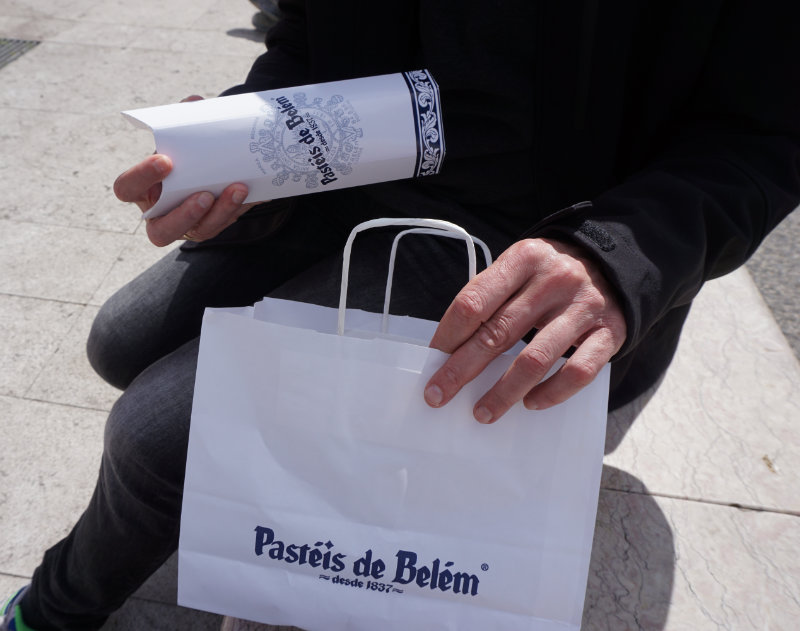
A monk from the monastery had the idea to make pastries in an old sugar factory next to his monastery. This factory is now the cake shop that makes and sells the little tarts. The nuns used egg whites to starch their habits and the spare egg yolks were ideal as an ingredient for the tarts. In 1837 the first tartlets were sold. They created a hype so rapidly that it was decided to keep the recipe with the exact ingredients a secret. It has been a secret for 180 years now and counting.
There are many versions of the tarts on the market now, but none is quite on par with the original. Up to 900 tarts are handmade in the bakery per hour. In the main season the shop is usually packed.
We were lucky, no queue and not a single soul in front of us when we went to the checkout. So in hindsight, this could be due to the unfriendly staff we encountered that day. The Pastéis de Belém cannot be blamed for the lack of customers. For 6,60 € (a price already hiked up for tourists) we got 6 small tarts, a small bag of powdered sugar and a small bag of cinnamon. We found ourselves a sunny spot outside and examined our shopping bag. I ate the first, still lukewarm, pastry pure, the other two with cinnamon and powdered sugar. Delicious! I liked it and I can recommend the Pastéis de Belém.

Recipe for Pastéis de Nata (similar to the Pastéis de Belém)
I looked up the recipe for Pastéis de Nata – have fun! Ingredients for 12 pieces:
- 180 g sugar,
- 2 tbsp flour,
- 8 egg yolks,
- 500 ml cream,
- 1 pinch salt,
- grated peel of 1 lemon,
- 500 grammes of puff pastry,
- cinnamon for dusting.
Preparation: Whisk together the egg yolks, the cream, the salt and the lemon peel. Add to a pot, let it boil briefly, stir constantly. In a bowl, let it cool until lukewarm. Roll out the dough and cut out circles that fit into muffin liners. Place the dough into the liners. Preheat oven to 250 degrees centigrade. Fill the whisked mixture into the moulds, leave about 1 cm room to the top. Bake for 10 to 12 minutes on the middle rail. The surface should be caramelised and slightly dark. Remove the tartlets from the oven and place them on a cooling rack. Sprinkle with cinnamon.
Address:
R. Belém 84-92,
1300-085 Lissabon, Portugal
Opening hours (2017):
daily 8-23






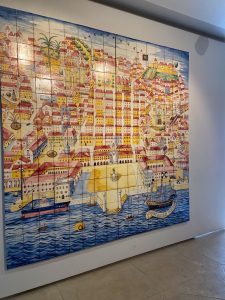











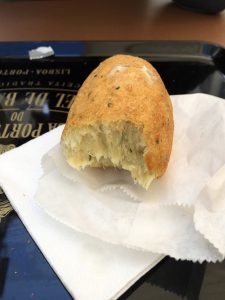
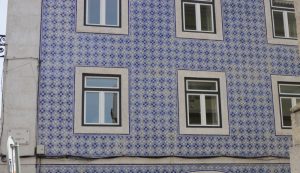

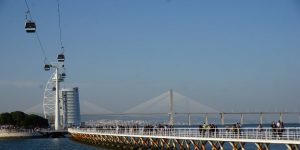








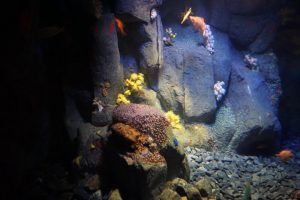
Leave a Reply